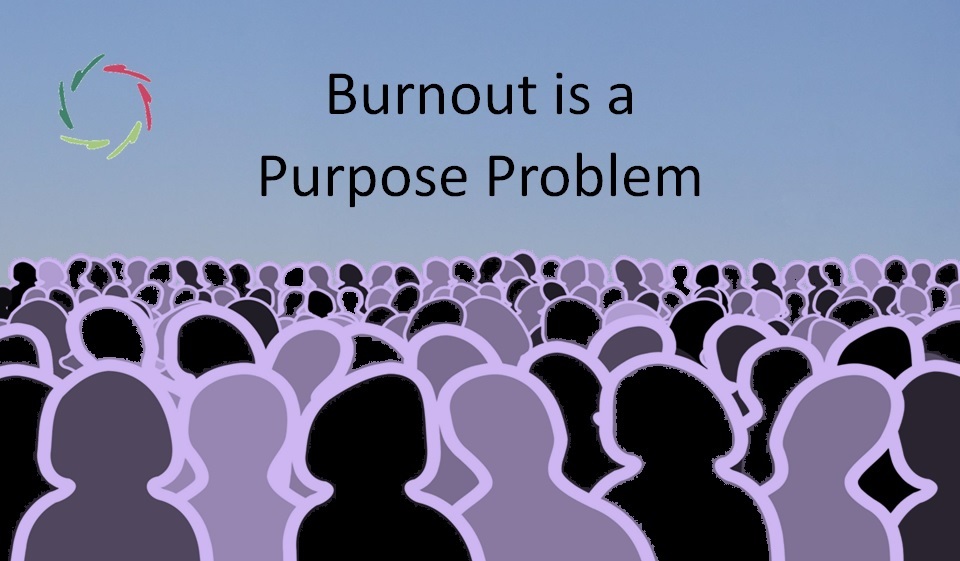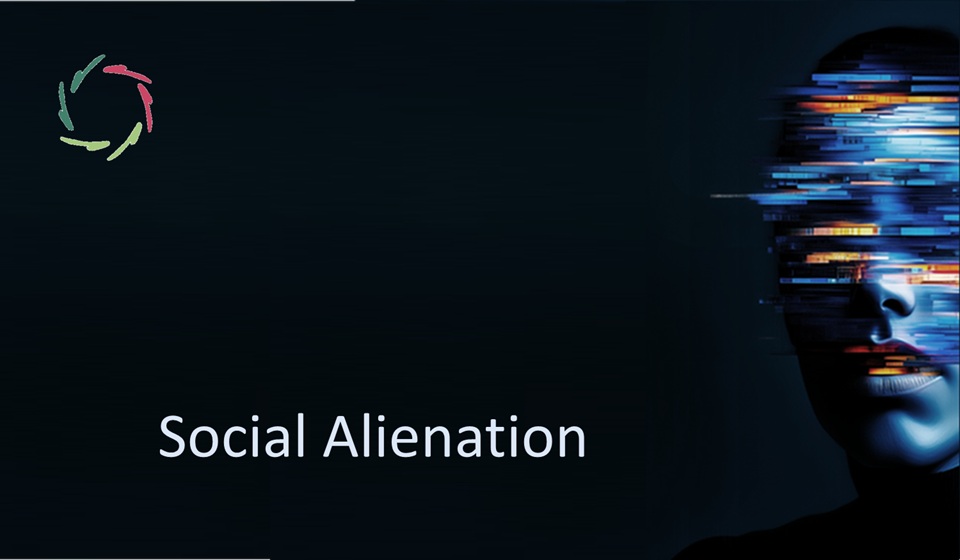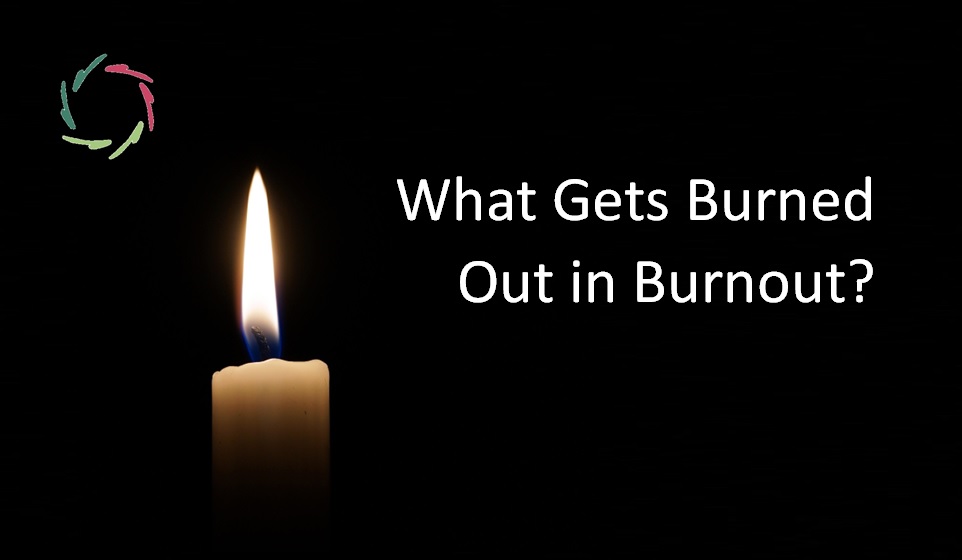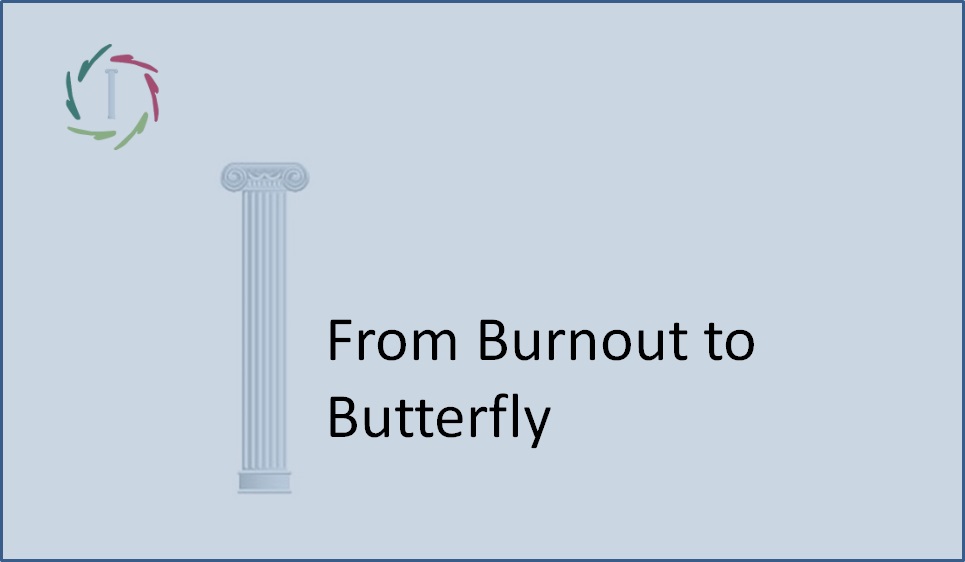Burnout is a Purpose Problem

Of many causes of burnout, six are frequently mentioned, but seldom with an essential focus on purpose, although all lie naturally close. Let’s look at them precisely from this viewpoint.
Work overload
With purpose, there is less difference between job and work. People can spend an immense amount of energy if purpose is present.
Providing sufficient resources signifies that management finds the job purposeful, and vice versa. If your superiors don’t find it worthwhile what you do, why should you? On the other hand: “If you can’t handle it, I give you less to do” diminishes workload but carries the meaning of failure, and still no sign of purpose.
Doing more with fewer people can come from:
- a striving toward more efficiency. A.I. may be an excellent tool. Efficiency brings more meaning to the job, which can also become more high-level creative.
- or a striving to cut costs on the back of the already overloaded, giving them not a sense of purposeful human beings but purpose-devoid instruments.
Which direction will lead to more or less burnout?
Lack of control
This is: control of workload, assignments, scheduling.
Control is generally wanted in order to orient one’s purpose. If the purpose is continually being met, there is no need for control. Therefore, the feeling of ‘lack of control’ indicates a purpose issue.
Knowing the purpose of the organization well aids significantly. At least, one can align or search for alignment. The right questions can be asked in this respect, and crises of purpose can be avoided.
The right questions, of course, are not directly control-oriented but purpose-oriented. Also, giving more control just like that doesn’t solve the underlying problem. It frequently backfires, causing a surface-level back-and-forth of management ideologies.
Insufficient reward
Money is energy to get things done ― ideally in the direction of good purpose.
For instance, Corporate Responsibility programs show all employees they are working for a company they have chosen well to give their time and effort.
On the other hand, insufficient rewards show that purposes aren’t valued. In other words, there is also symbolic meaning attached. Giving a raise is an occasion to celebrate this. Not appreciating the symbolism makes the raise a much less effective motivator ― the same for a bonus or other kind of reward.
Brains don’t make contact with money, but what the money symbolizes even before it is given. Note that instrumentalism has no place in this. Thinking that rewards diminish burnout will not do.
Breakdown of community
A community is a group of people who find themselves in the same purpose. Otherwise, it’s just a group. Good teambuilding is community-building is purpose-building.
Any organization thrives on inside community-building. If there is also outward community-building, so much the better. In this, one can see the importance of what the organization means to the environment.
Let this fire burn brightly!
Absence of fairness
In stories of burnout, absence of fairness usually plays a crucial role that can only be understood at a deeper level. This is about a profound sense of trust and respect. A joint – and jointly, respectfully felt – purpose naturally shows in fairness.
Thus, the absence of fairness also indicates a lack of underlying purpose. It profoundly degrades the mental environment into an instrument for mere profit and personal politics ― both lacking any degree of deeper purpose.
Value conflicts
Of all burnout causes, value conflicts lie closest to purpose. They are, therefore, almost always crucial to discern and open up. It’s better to tackle than try to avoid them.
Values and value conflicts are mostly personal. This makes good coaching (not ‘cuddling’) one of the most potent assets in business for preventing burnout. The following is the next step, naturally:
Open Leadership
These six causal elements are all subject to the absence/presence of Open Leadership.
This doesn’t put the guilt of burnout into the leader’s shoes, but it definitely shows that a lot can be done top-down ― which is in Open Leadership, of course, the same as bottom-up.
Individual employees are not exempt from any action. Open Leadership is shared responsibility also in the prevention of burnout. This text, therefore, shows six interesting directions to work on.
A lot can be done in burnout prevention!


